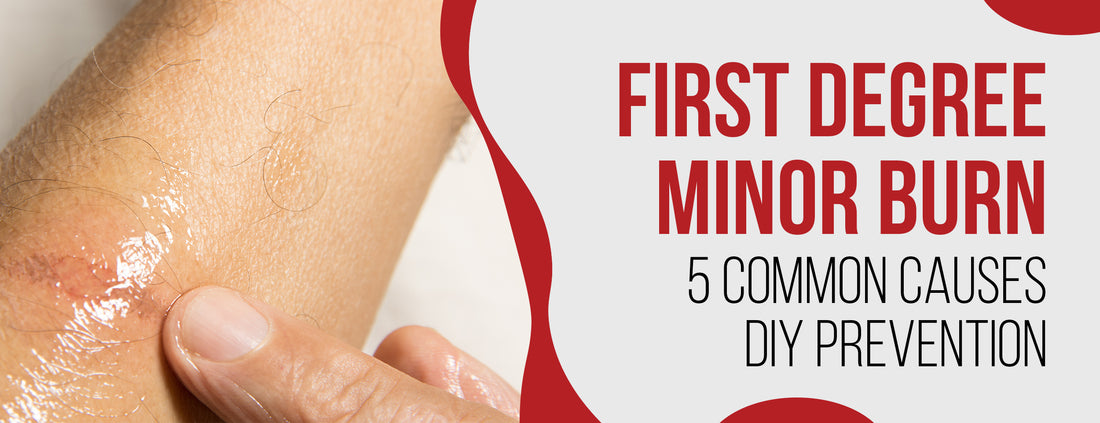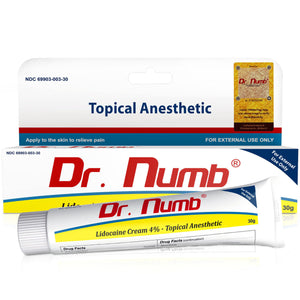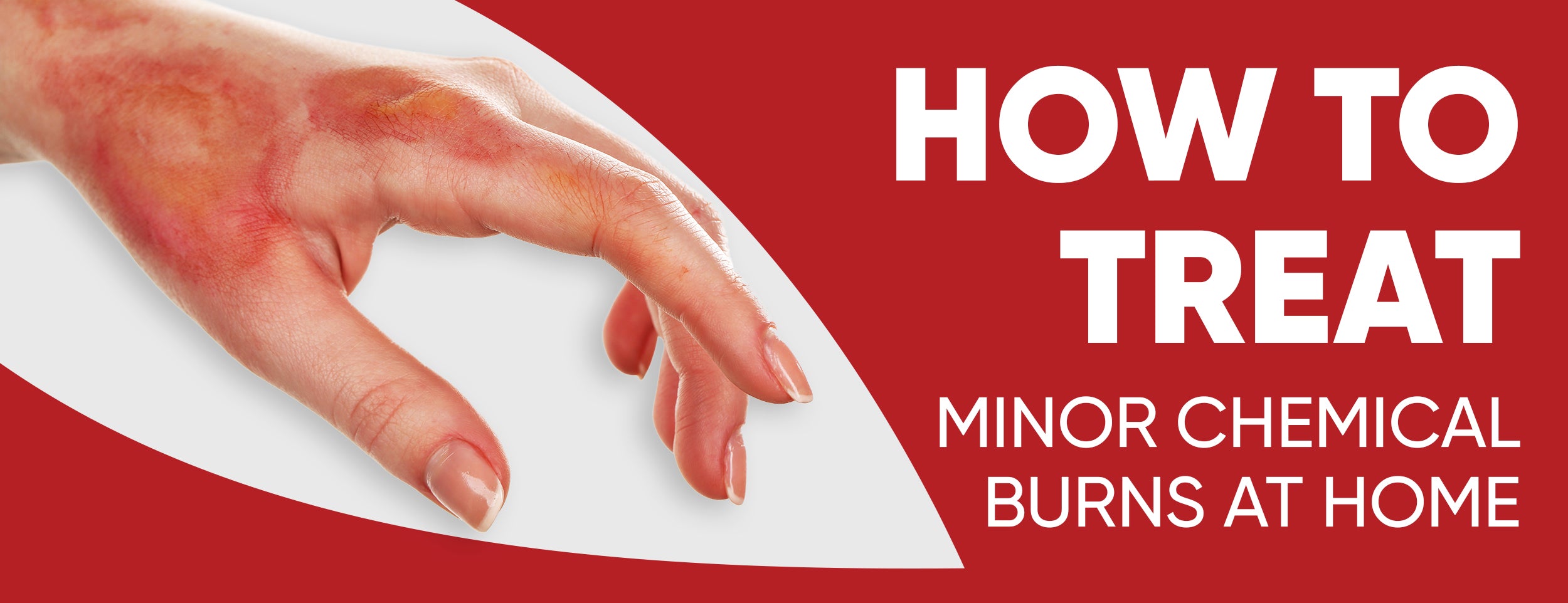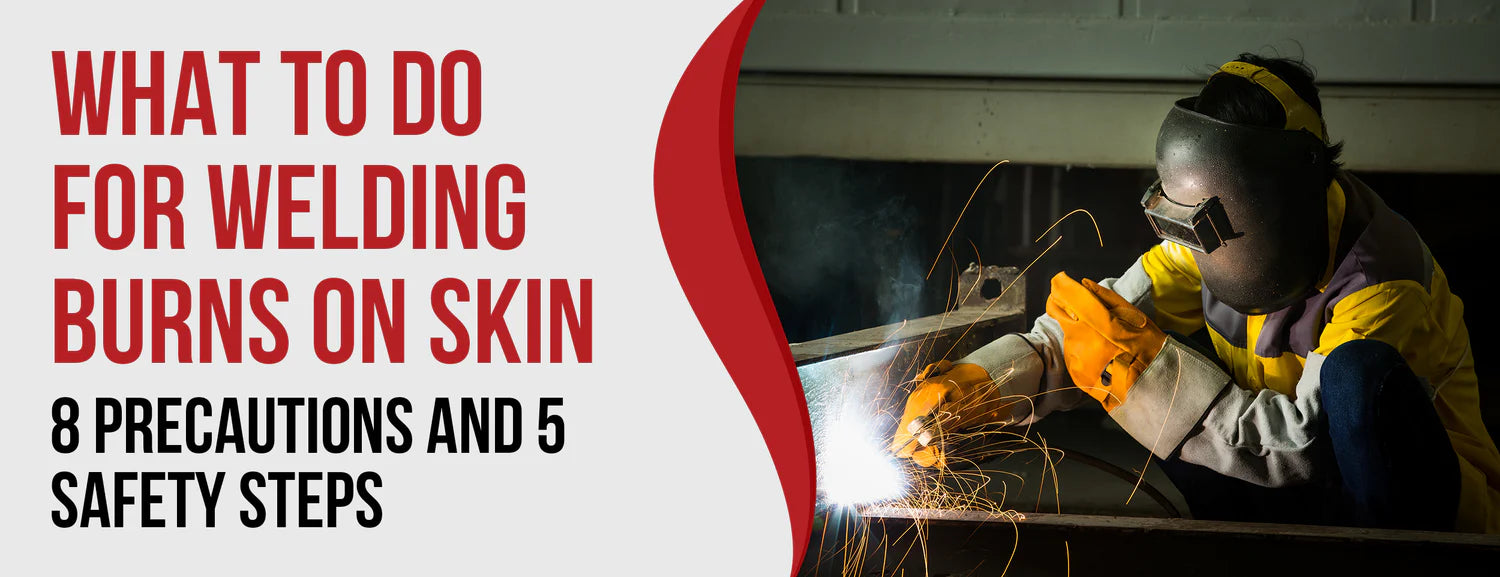First-degree minor burns are common injuries that can happen to anyone, anywhere. Whether you accidentally touch a hot pan, get sunburned, or come into contact with a mild chemical, these burns can be quite painful and uncomfortable. They are typically not serious and can be easily treated at home.
To begin treatment, immediately immerse the burn in cool tap water or apply cold, wet compresses for around 10 minutes or until the pain subsides. It's important to remember not to apply ointments, toothpaste, or butter to the burn, as these may cause infection. Instead, opt for applying petroleum jelly two to three times a day.
In this blog post, we will delve into the nature of first-degree minor burns, exploring their causes, symptoms, proper treatment, and management. Additionally, we will share preventive measures to help you avoid these burns in the first place. Keep reading to learn more about treating and preventing minor burns.
First-Degree Minor Burns: Everything You Need to Know

A first-degree minor burn is a common but mild injury that affects the skin's outer layer. Heat sources like hot water, fire, electricity, or chemicals can aggravate the condition. While not serious, it can still be painful and cause redness and swelling.
Immediate First Aid For First-Degree Minor Burns
When you or someone else suffers a first-degree minor burn, it's important to stop the burning process immediately. This might involve removing the person from the heat source, extinguishing flames, or rinsing off chemicals. Follow these steps:
Step-by-Step Guide to Treating a First-Degree Minor Burn
Remove any clothing or jewelry near the burn, but avoid pulling off anything stuck to the skin.
Cool the burn with cool or lukewarm running water for at least 10 minutes until it is no longer painful. Avoid ice, iced water, or creams/greasy substances like butter, as they can worsen the burn.
Cover the burn with a clean, waterproof cling film or plastic bag dressing. This will protect against infection and reduce pain.
If the burn is larger than your palm or on the face, neck, hands, feet, joints, or genitals, seek medical attention immediately.

The Use of Cold Water to Relieve Pain
Using cold water to cool the burn is one of the most effective ways to reduce pain and inflammation. Cold water constricts blood vessels and lowers skin temperature, preventing further damage and swelling. It also numbs nerve endings and provides pain relief.
Using cool or lukewarm water, not ice or ice, is important. Ice can cause frostbite and damage the skin, while iced water can dangerously lower body temperature, especially in young children and the elderly.
The Role of Over-the-Counter Pain Medication
Taking over-the-counter pain medication like paracetamol or ibuprofen can also help alleviate the pain from a minor burn of the first degree. These drugs reduce inflammation and discomfort. Always check the dosage and instructions on the label before taking them. Children under 16 should avoid aspirin, which can cause a rare but serious condition called Reye’s syndrome.
Avoid Home Remedies That Can Worsen the Burn
Home remedies like butter, oil, toothpaste, honey, vinegar, or egg whites can heal minor burns. These substances can do more harm than good. They can trap heat, increase the risk of infection, cause allergic reactions, or interfere with healing. Stick to cold water and a clean dressing for best results.
Understand First-Degree Minor Burns: Causes and Symptoms

A first-degree minor burn, also known as a superficial burn or wound, is an injury that specifically affects the epidermis, the outermost layer of the skin. The epidermis comprises protective dead cells that shield the underlying layers from infection and dehydration.
What is a First-Degree Minor Burn?
A first-degree minor burn, or wound or burn of a first degree, only affects the outermost layer of skin, called the epidermis. The epidermis consists of protective dead cells that prevent infection and dehydration.
Common Causes of First-Degree Minor Burns
First-degree minor burns can be caused by:
- Sunburn: Exposing the skin to UV rays from the sun or tanning beds can damage skin cells and lead to premature aging and skin cancer.
- Scalds: Contact with hot liquids or steam, such as boiling water or oil, can result in scalds in various settings like the kitchen, bathroom, or workplace.
- Electricity: Exposure to electric currents from sockets, cords, appliances, or lightning can cause burns, shocks, or cardiac arrest.
- Fire: Contact with flames or hot objects like candles or stoves can cause burns, smoke inhalation, or carbon monoxide poisoning.
- Chemicals: Contact with corrosive or irritant substances like acids, solvents, or bleach can result in burns, blisters, or skin damage.
Symptoms of a First-Degree Minor Burn
A first-degree burn's signs and symptoms are typically mild and short-lived, including:
- Pain: The burn may feel sore, tender, or stinging, lasting a few hours or days.
- Redness: The burn may appear red or pink, but the color will fade over time.
- Swelling: The burn may become inflamed and swollen, but the swelling will subside after a few days.
- Dryness: The burn may feel dry or tight, and the skin may peel off or flake after a few days.

Healing and Managing First-Degree Minor Burns at Home
Don't let a minor burn become a major problem. Follow these simple steps to promote healing, prevent infection, and avoid scarring:
Keep it Clean and Safe.
To treat a burn, delicately cleanse it with mild soap and water once or twice daily. Ensure to change the dressing frequently, particularly if wet or soiled. Refrain from touching or scratching the burn, which can introduce germs and impede healing.
Choose The Right Dressings and Ointments.
Apply a thin layer of antibiotic ointment or cream to prevent infection and moisturize the skin. To minimize friction and irritation, protect the burn with a non-sticky dressing, such as cling film or a sterile gauze pad. It's important to avoid materials like cotton wool that may adhere to the skin and cause discomfort when removed.
Moisturize For Healthy Skin.
To prevent dryness and cracking of a burned area, make it a habit to moisturize regularly using gentle lotions, such as aloe vera gel or petroleum jelly. Reapply the moisturizer as necessary to maintain the skin's softness and suppleness. It's important to avoid skincare products that contain alcohol, perfume, or colorants, as they may irritate the skin and lead to inflammation.
When to Seek Medical Attention?
While many minor burns can be managed at home, it is important to be mindful of potential signs of infection or severity. If the burn encompasses a significant body area, affects sensitive regions such as the face or genitals, exhibits signs of infection, fails to heal within two weeks, or leaves a scar, it is advisable to seek medical attention.
Preventing First-Degree Minor Burns: Safety Tips You Should Know

Don't let minor burns ruin your day. By taking a few safety measures, you can avoid the pain and discomfort of first-degree burns. Here are some tips to keep in mind:
Protect Yourself From Hot Water Burns at Home
Hot water burns are a common cause of minor burns, especially for children and the elderly. To prevent them, follow these steps:
- Set the water heater temperature to a maximum of 120°F (49°C) or use a thermostatic mixing valve to regulate the water temperature.
- Test the water temperature before bathing or showering using your hand or a thermometer.
- Never leave children or vulnerable adults alone near hot water sources.
- Install anti-scald devices on faucets and shower heads to prevent sudden changes in water temperature.
Stay Safe around Heat Sources and Open Flames
Improper handling of heat sources and open flames can result in minor burns. To prevent accidents, remember these safety practices:
- Keep flammable materials away from heat sources and open flames.
- Use fireguards or screens to protect yourself and others from sparks and flames.
- Never leave candles, matches, lighters, stoves, or fireplaces unattended or within reach of children or pets.
- Wear protective gloves and clothing when dealing with hot objects or cooking food.
- Use caution when using electrical appliances, cords, and sockets to avoid overloading.
Protect Your Skin From Chemical Burns
Chemical burns can be painful and dangerous. Stay safe by following these precautionary steps:
- Always read and follow the instructions and warnings on chemical product labels.
- Wear protective gloves, goggles, and clothing when handling chemicals, and avoid contact with your eyes, nose, mouth, or skin.
- Store chemicals in their original containers, out of reach of children and pets.
- Dispose of chemical products properly according to local regulations.

Raise Awareness to Minimize Burn Risks
Education and awareness are key in preventing minor burns. Take these actions to protect yourself and others:
- Educate yourself about the different types and degrees of burns and how to treat them.
- Teach children about fire safety and how to prevent and respond to burns.
- Stay alert to potential heat sources that can cause burns in your surroundings.
- Seek medical attention promptly for serious or infected burns.
Conclusion
Minor burns are mild injuries that affect only the skin's outer layer. Heat sources, such as hot water, steam, fire, electricity, or chemicals, can cause it. Symptoms of first-degree minor burns include pain, redness, swelling, and dryness in the affected area.
You can use cold water, pain medication, ointment, dressing, and moisturizer at home for treatment. However, if the burn is large, involves sensitive areas, shows signs of infection, or does not heal within two weeks, it is recommended to seek medical attention.
To prevent first-degree minor burns, follow safety measures around heat sources, hot water, chemicals, and sun exposure. Educating yourself and others about burn risks and first aid can help minimize the chances of getting burned and ensure a speedy recovery.












